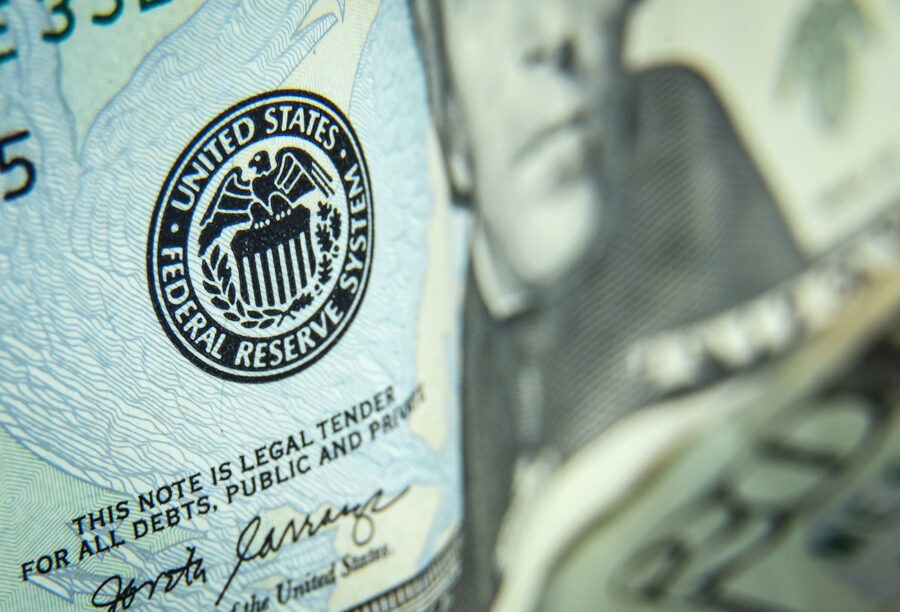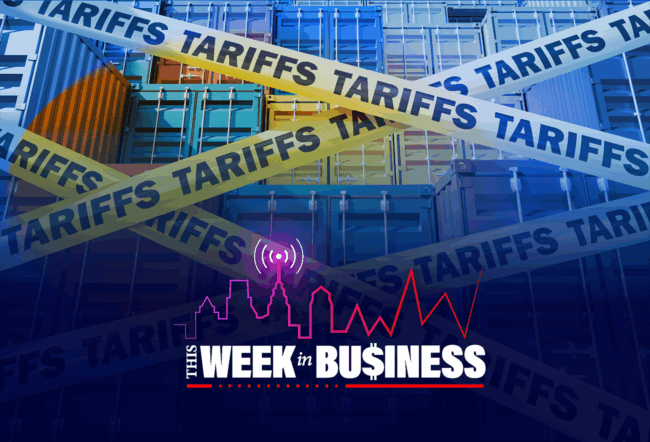The U.S. Federal Reserve is facing one of the most challenging times in its 109-year history as it tries to tame inflation and stave off a recession. Fed chairman Jerome Powell spelled out the gravity of that challenge last Wednesday (July 27) when the central bank raised the target rate for the federal funds rate by 75 basis points for the second consecutive time.
“It’s very hard to say with any confidence — in normal times — what the economy is going to be doing in six or 12 months,” Powell said at a press conference after the Federal Open Market Committee (FOMC) announced its monetary policy action, which is a combination of higher interest rates and reducing the size of the Fed balance sheet. “These are not normal times. There’s significantly more uncertainty now about the path ahead than I think there ordinarily is, and ordinarily, it’s quite high.”
The Fed is facing “extraordinary times,” Wharton professor of legal studies and business ethics Peter Conti-Brown said ahead of the Fed announcement on the Wharton Business Daily radio show that airs on SiriusXM. (Listen to the full podcast above.) “It’s trying to say, ‘We want to bring inflation down as quickly as we can without bringing in a baby depression as a consequence,’” he added. Conti-Brown is also a financial historian and author of a book on the Fed.
The Fed’s aggressive stance on monetary policy is to make it abundantly clear that price stability is its overriding goal for now. “The reason [the Fed is] signaling so aggressively with these interest rate hikes [is that it] has to shore up its credibility [with the] markets — that it’s taking inflation seriously, while at the same time not threatening to turn millions of Americans, and individuals the world over, out of work in the name of fighting that inflation,” said Conti-Brown.
If they are able to engineer disinflation without recession, it will be the greatest accomplishment that a central bank has seen in the last century.— Peter Conti-Brown
Prospects of a Soft Landing
At a Wall Street Journal event in May, Powell talked about the possibility of a “softish landing” for the economy instead of a severe downturn. “It’s unprecedented,” Conti-Brown said. “We’ve had a couple of ‘soft landings’ or periods of disinflation without recession, but we’ve never seen it with inflation as high as it is today, nor with the interest rate hikes as aggressive as the Fed has signaled. And indeed, over the last quarter, we’ve heard from Chair Powell and others that their commitment to a soft landing is looking more and more like their optimistic outlook rather than their realistic or pessimistic outlook.” U.S. inflation hit a 40-year high of 9.1% in June.
“History is not on Powell’s side or the Fed’s side in terms of the soft landing,” Conti-Brown continued. “But if they are able to engineer disinflation without recession, it will be the greatest accomplishment that a central bank has seen in the last century.”
The debate continues over whether or not the U.S. is in a recession. The latest GDP data showed that the U.S. economy contracted 0.9% in the second quarter this year. That came after a 1.6% contraction in the first quarter, meeting the commonly accepted definition of a recession as two consecutive quarters of negative growth. But not all are agreed on that definition, especially the White House. In a note written before the latest GDP data came in, the White House saw “strong growth in the U.S. economy,” citing indicators used by the National Bureau of Economic Research, which it described as the “official recession scorekeeper.”
We’ve had a couple of ‘soft landings’ or periods of disinflation without recession, but we’ve never seen it with inflation as high as it is today….— Peter Conti-Brown
The Next Fed Move
In the eight weeks between last week’s FOMC meeting and the next in September, the Fed’s hand will be guided by data on labor market conditions and inflation, Powell said in his press conference. “The question we’ll be asking is whether the stance of policy we have is sufficiently restrictive to bring inflation back down to our 2% target?”
In the FOMC’s September meeting, “another unusually large increase could be appropriate,” Powell had said. “[The two latest] rate hikes have been large, and they’ve come quickly. And it’s likely that their full effect has not been felt by the economy. So, there’s probably some additional tightening, or significant additional tightening, in the pipeline.”
A bigger, 100-basis-point rate increase is not ruled out in any additional tightening the Fed may want to pursue. A 100-basis-point rate increase is “not unique, but highly, highly unusual,” according to Conti-Brown. “One hundred basis points is a central bank responding to an economy in absolute distress. When you see [rate increases of] 25 or 50 basis points on a long hike cycle, that is an aggressive central bank. Above 50, we are in historically unusual circumstances. One hundred basis points is virtually unprecedented.”
In the broader world of central banks across the globe, the U.S. Fed is in a relatively better place than others, according to Conti-Brown. The U.S. does not face the threats that central banks in countries like Lebanon, Turkey, Sri Lanka face. “The monetary and economic macroeconomic climate for the United States, the world’s largest economy, and the international reserve currency, is still highly, highly favorable,” he said.



